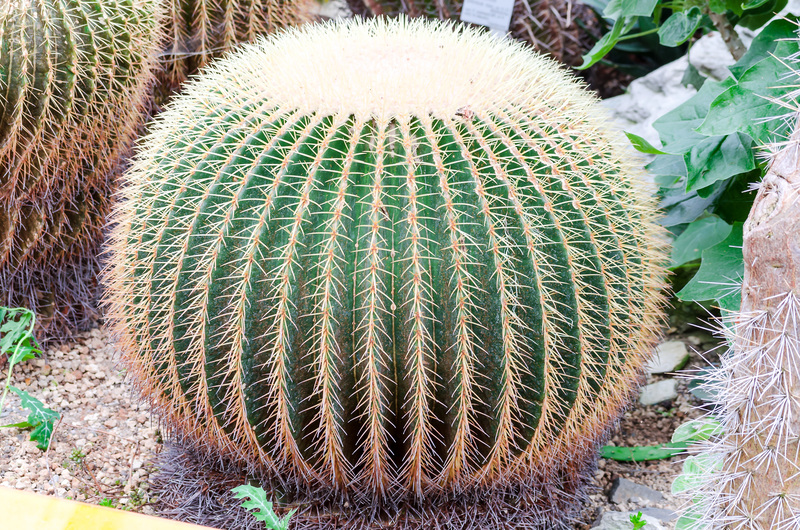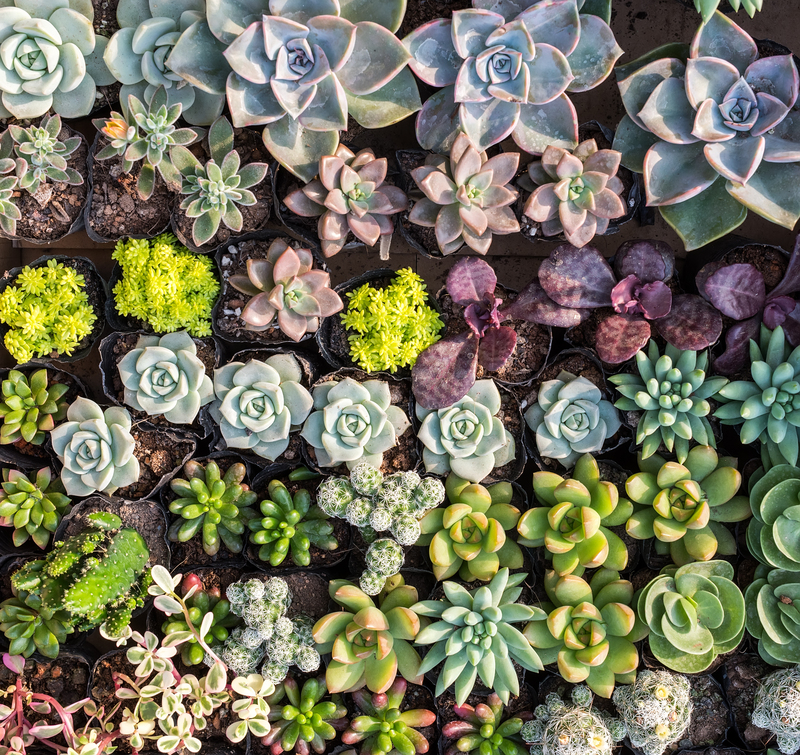Dog-friendly backyard landscapes made easy
Posted on 04/09/2025
Dog-Friendly Backyard Landscapes Made Easy: Transforming Your Outdoor Space
Designing a dog-friendly backyard landscape is an excellent way to create a safe, stimulating, and enjoyable environment for your furry friends. With the right planning and creative thinking, you can ensure your outdoor space is both pet-friendly and pleasing for the whole family. In this comprehensive guide, we cover every aspect of making your backyard a dog haven--from choosing the right plants to designing play zones and ensuring safety. Read on to discover practical, easy-to-implement ideas for a backyard both you and your canine companion will love!

Why Prioritize a Dog-Friendly Backyard?
Dogs need regular exercise, mental stimulation, and a safe environment to thrive. By dedicating time and thought to pet-friendly landscaping, not only do you create a backyard that supports your dog's health and happiness, but you also minimize maintenance headaches and potential hazards. A well-designed dog-friendly backyard can:
- Reduce destructive behaviors such as digging and chewing
- Offer essential exercise and play opportunities
- Keep your dog safe from toxic plants and unsafe materials
- Provide mental enrichment through scent trails, obstacle courses, and more
- Create a harmonious space for both pets and humans
Planning Your Dog-Friendly Backyard Landscape
1. Assess Your Space and Your Dog's Needs
Start by looking at your backyard from your dog's perspective. Consider the following:
- Size and breed - Larger or high-energy breeds often need more space and stimulation.
- Personality - Does your dog dig, chew, or love water?
- Accessibility - Ensure entrances/exits are safe and easy for your dog to maneuver.
- Security - Fencing and boundaries are key for keeping your dog safe.
Make a simple sketch of your backyard, marking out shaded areas, sunny spots, existing plants, and any hazards. This will help you decide what you need to add, remove, or change.
2. Safety First: Secure and Dog-Proof Boundaries
An enclosed yard is one of the most important elements of a dog-friendly outdoor area. Sturdy, secure fencing prevents escape and keeps out unwanted wildlife. Consider the following fencing tips:
- Height - At least 4-6 feet tall, depending on your dog's jumping ability.
- Material - Choose chew-proof, climb-resistant materials such as vinyl, composite, or metal.
- Gaps - Ensure there are no gaps through which your dog can squeeze.
- Underground barriers - Add a buried border if your dog digs near the fence line.
Gates should latch securely and automatically close to prevent accidental escapes.
3. Non-Toxic, Dog-Safe Plants
Many landscaping plants are dangerous to dogs. Before planting, check that your choices are non-toxic. Some safe plants for dogs include:
- Rosemary
- Sunflowers
- Marigolds
- Blueberries
- Camellias
Plants to avoid include:
- Oleander
- Azaleas
- Foxglove
- Sago palm
- Lilies
- Grapes (and grapevines)
Always double-check plant safety with your veterinarian or a trusted gardening reference before introducing a new species to your backyard.
4. Paw-Friendly Ground Covers
The best dog-friendly backyard ground covers are durable, non-toxic, and gentle on paws. Here are some top choices:
- Tall fescue or Kentucky bluegrass - More robust and resilient for high-traffic lawns
- Clover - Tough, soft, and naturally insect resistant
- Artificial turf - Low-maintenance, easy to clean, but ensure it doesn't get too hot in the sun
- Pea gravel or smooth river rocks - Great in areas prone to muddy paws (avoid sharp-edged stones)
- Mulch - Stick to un-dyed, dog-safe varieties like cedar or pine. Avoid cocoa mulch.
Keep in mind: Some dogs may eat small rocks or mulch, so supervise initially and adjust as needed.
Dog-Friendly Backyard Zones: Fun and Functionality
Creating designated zones in your landscape can offer your dog a variety of enriching activities. Here's how:
1. Play & Exercise Area
- Open lawn - Reserve space for fetch, frisbee, or running laps.
- Agility course - Use tunnels, weave poles, ramps, and jumps to add a training challenge.
- Dug-in sand pit - Redirect natural digging instincts to a specific spot.
- Dog toys - Sturdy, outdoor-safe toys can keep dogs engaged for hours.
Rotate toys regularly to boost novelty and excitement.
2. Shady Retreats & Resting Spots
- Trees and shrubs - Provide natural shade on hot days.
- Dog houses or cabanas - An all-weather shelter doubles as a cozy den.
- Raised pet cots or cooling mats - Encourage your dog to lounge and watch the action.
Water bowls and fountains should be in shady locations so your dog always has fresh, cool water available.
3. Dog-Friendly Paths and Motivation Trails
- Meandering paths - Use mulch, paving stones, or artificial turf. Dogs love to patrol, so circular or looping trails work best.
- Scent gardens - Plant herbs like mint, basil, and thyme along trails for sniffing fun.
- Hidden treat stations - Tuck cookies or toys around corners to encourage exploration and play.
Paths keep your dog moving and help minimize damage to the rest of the yard.
4. Water Features for Dogs
- Shallow splash pools - Perfect for hot day fun (never leave unsupervised).
- Dog-friendly fountains - Continuous flow encourages drinking and play without standing water.
- Misting systems - Cool things off in extreme summer heat.
Note: Avoid deep ponds or water features if your dog can't swim or is prone to falling in.
Choosing Durable, Dog-Friendly Materials
Backyard durability is critical for pet and owner happiness. Dogs are tough on landscaping, so plan for wear-and-tear:
- Paths and patios: Use flagstone, pavers, or concrete for easy cleaning and paw safety.
- Fencing: As covered above, select chew-proof materials and make sure the bottom edge is flush with the ground.
- Mulch: Avoid cocoa mulch, which is toxic, and pick options that won't easily stick in fur or paws.
- Outdoor furniture: Choose sturdy, weather-resistant materials for beds and lounging spots.
Tips to Prevent Digging, Chewing, and Other Trouble
- Spot training: If your dog likes to dig, designate a particular area as the 'dig zone' and reward digging there.
- Barriers and deterrents: Use landscaping borders to block off garden beds or vulnerable spots.
- Chew toys: Place chew-approved toys around the yard to satisfy urges and distract from plants or furniture.
- Supervise and redirect: Especially when first introducing your dog to a new landscaping setup.
Consistency in training is key to keeping both your garden and your dog safe!
Seasonal Maintenance for Dog-Safe Backyards
Dog-friendly lawns and landscapes require year-round attention:
- Spring/Fall: Reseed or repair high-traffic lawn spots; refresh mulch; check for toxic seasonal plants like mushrooms.
- Summer: Ensure shade and water; check surfaces for heat before play.
- Winter: Prevent icy buildup; use pet-safe de-icers on pathways.
Regularly inspect fences, clean play equipment, and sweep paths for hazards such as sticks or stones that could injure your dog or damage paws.
Mistakes to Avoid in Dog-Friendly Backyard Landscaping
- Ignoring plant toxicity: Many beautiful plants can be highly toxic to pets.
- Choosing hot or rough surfaces: Avoid asphalt or gravel with sharp edges to prevent burned or injured paws.
- Omitting shade: All-backyard sun exposure can quickly lead to heatstroke.
- Leaving standing water: Can attract mosquitoes or become hazardous to small dogs.
- Forgetting maintenance needs: High-maintenance yards are difficult to keep safe and fun for your dog.
Tip: Check your yard after landscape changes and after storms for new hazards such as broken branches, toxins, or escaped pets.
Low-Maintenance and Eco-Friendly Solutions
You can have a dog-proof backyard that is low on maintenance and high on sustainability:
- Native plants: Choose species suited to your region--they're tougher, thrive with less water, and are less likely to need pesticides or fertilizers.
- Automatic sprinklers: Keep lawns green and cool; just time them to avoid playtimes.
- Composting bins: Enclose securely to prevent nosy noses!
- Rain gardens: Manage runoff while adding a sniff-worthy stop on backyard walks.
Eco-friendly landscaping is great for your pet, the local wildlife, and the planet.

Sample Dog-Friendly Backyard Landscape Plan
- Secure perimeter with 5-foot vinyl fencing and a double-gated entry.
- Lawn area of tough Kentucky bluegrass for running and games.
- Shaded corner with a large maple and a raised dog house.
- Mulched dig zone with buried toys and a sand patch.
- Curved path lined with lavender and rosemary for scent exploration.
- Small splash pool with a solar fountain, set on a flagstone patio for drainage.
- Native shrub border to provide privacy and wildlife interest (all non-toxic!).
This plan is just a starting point--adjust for your space, your climate, and your dog's unique personality!
Conclusion: The Joy of Dog-Friendly Backyard Landscapes
Creating a dog-friendly backyard that is safe, attractive, and easy to maintain isn't just a luxury--it's a gift for your pet and your family. With thoughtful planning, smart plant choices, and durable materials, you'll give your dog the security and enrichment they crave, while improving your own outdoor living experience. Mix and match the ideas above to make your dog-friendly landscape a reality today!
Invest in a dog-friendly transformation and enjoy years of happy, healthy tail wags in your beautiful backyard oasis!



